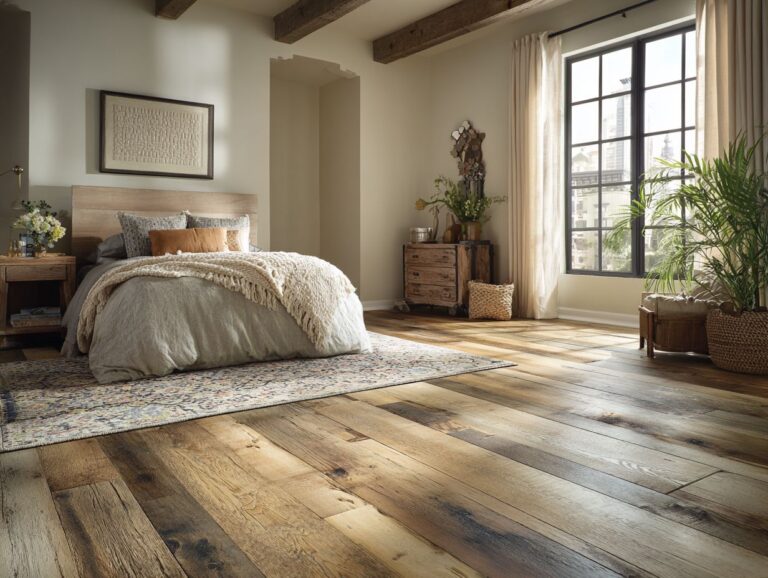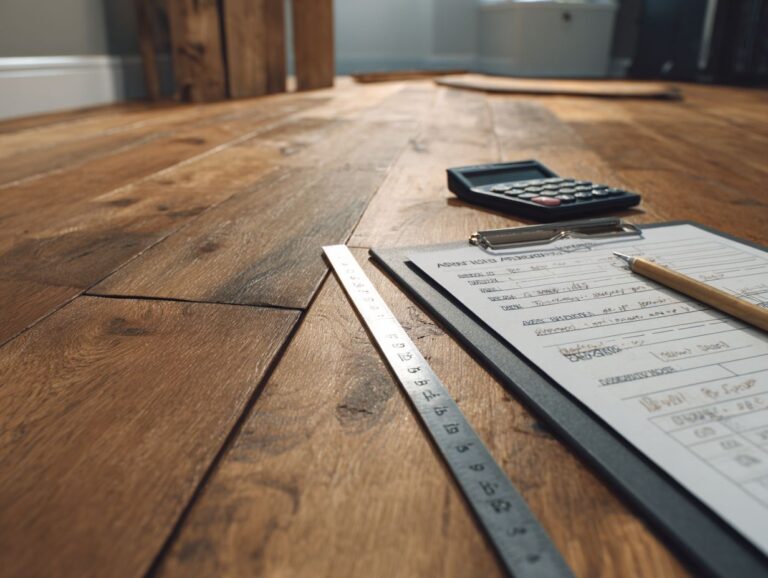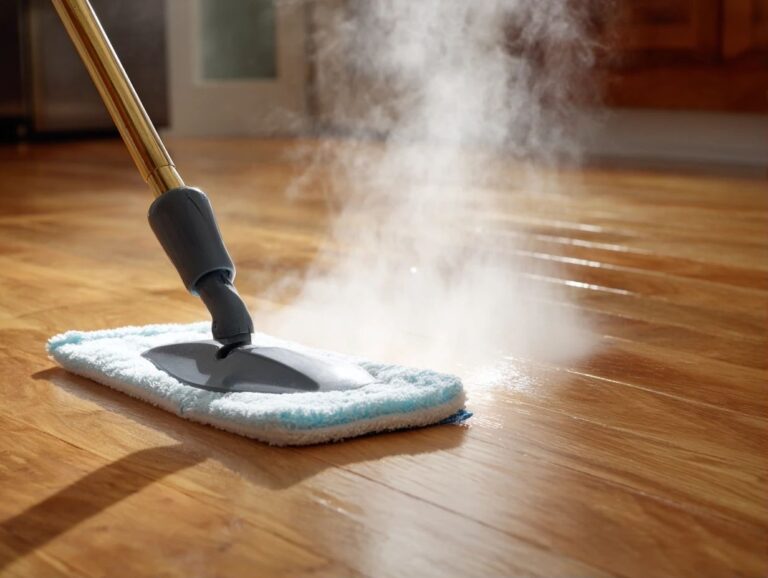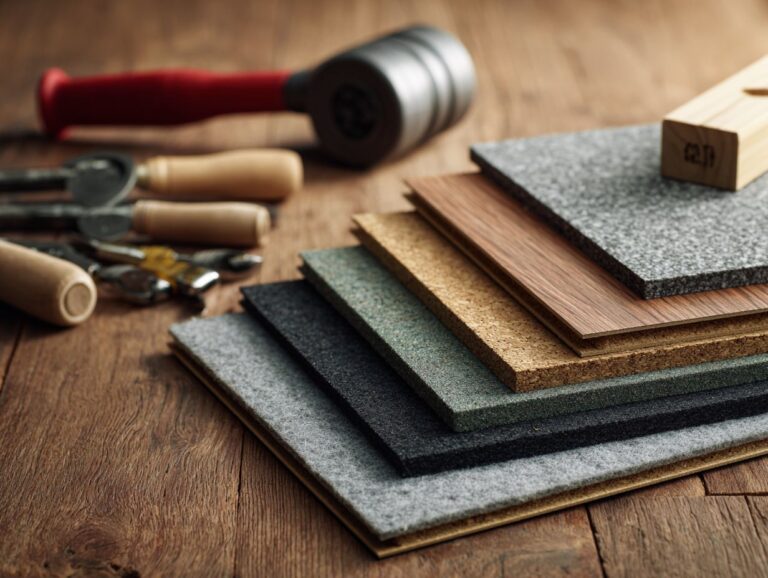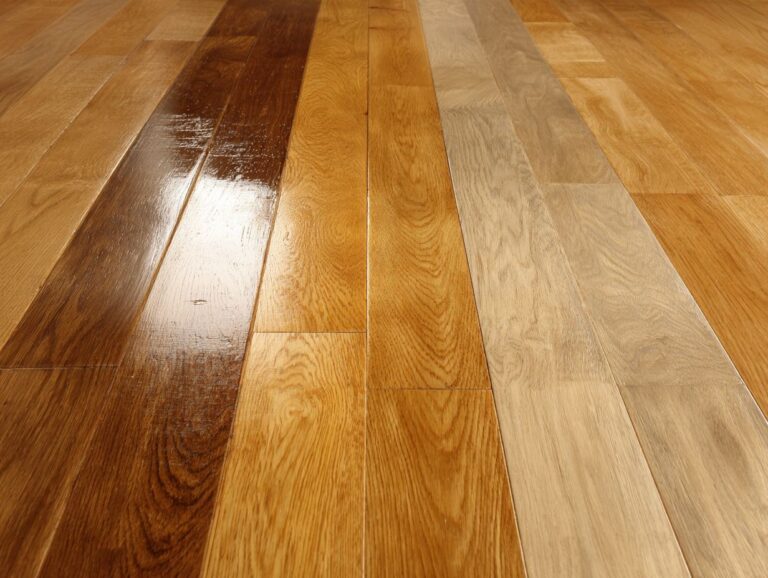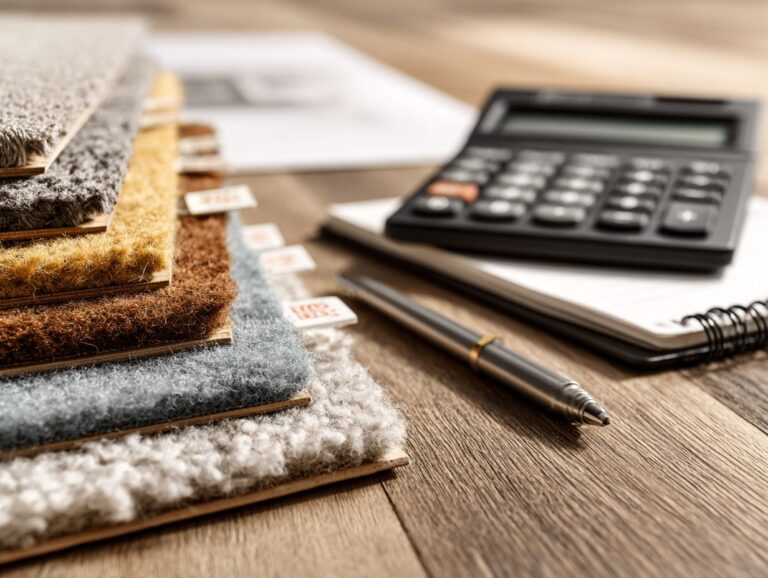Wholesale vs Retail Flooring Prices – Insider Guide
Knowing the difference between wholesale and retail flooring prices can lead to big savings on your next project. American Carpet Wholesalers provides a wide range of top-notch products, such as Shaw Laminate and Mohawk PureTech, helping you easily choose what’s best for your home. In this insider guide, we’ll break down the key differences between wholesale and retail flooring prices, helping you make informed decisions that suit your budget and style.
Key Takeaways:
Contents
- Wholesale Flooring Prices
- Retail Flooring Prices
- Comparative Analysis: Wholesale vs Retail
- 2024 Flooring Market Price Comparison
- Buying Strategies for Flooring
- FAQs
- Frequently Asked Questions
- What is the difference between wholesale and retail flooring prices?
- Can I get better deals on flooring by buying wholesale?
- Are there any disadvantages to buying flooring wholesale?
- What should I consider when choosing between wholesale and retail flooring prices?
- Can I negotiate prices when buying flooring wholesale?
- Are there any other factors to consider when buying flooring wholesale?
Basics of Flooring Prices
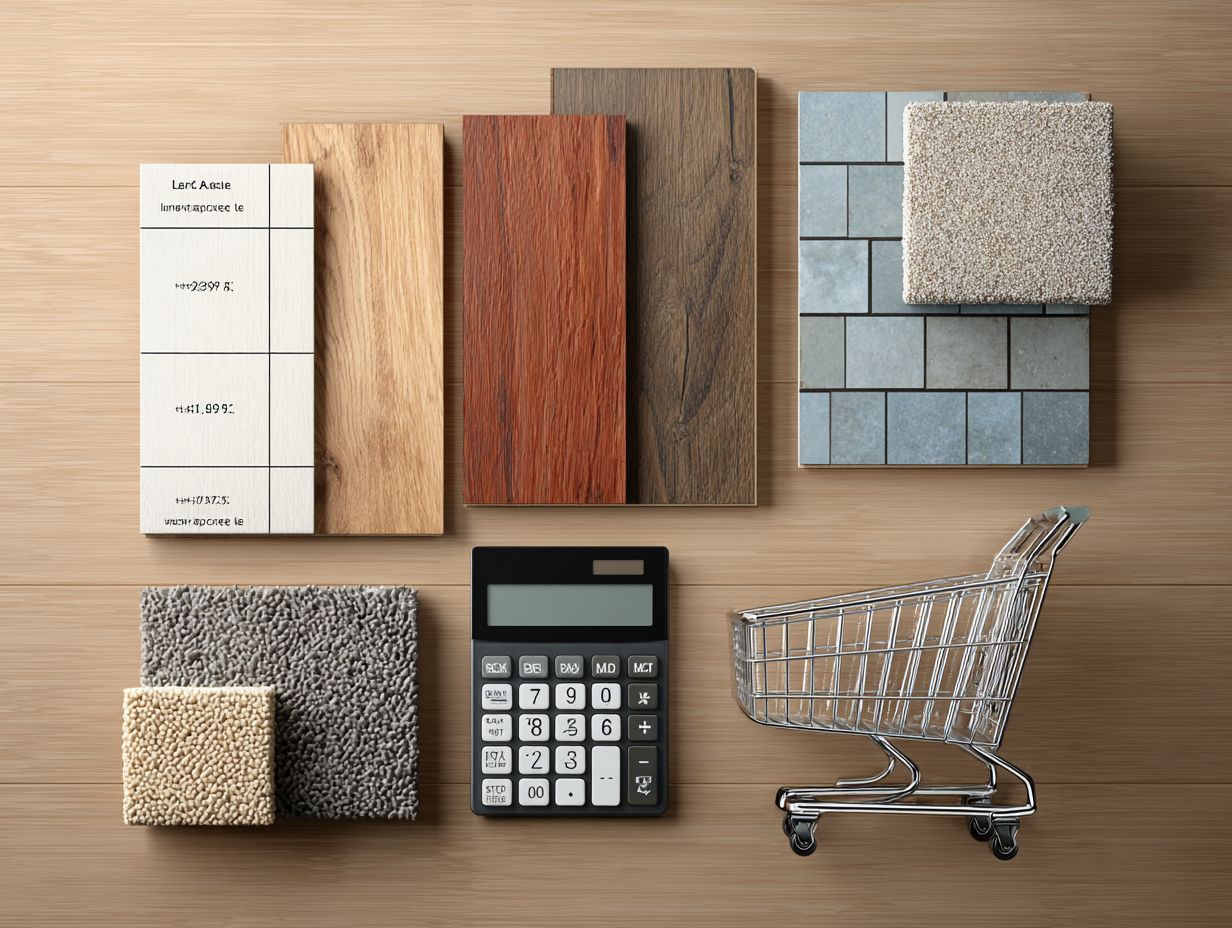
Flooring prices vary widely based on materials like hardwood, laminate, and luxury vinyl, with average costs ranging from $2 to $10 per square foot depending on quality and type.
Hardwood flooring is usually more expensive, with top choices reaching up to $10 per square foot. In contrast, laminate and luxury vinyl generally range from $2 to $5.
Installation costs can add another $1 to $3 per square foot, influenced by the complexity of the layout and the choice of installers. can significantly affect your budget planning.
For example, installing good quality engineered hardwood might cost about $15 per square foot, whereas a cheaper laminate might only cost $5. It’s important to consider both the quality of materials and your budget.
The Importance of Price Comparison
Comparing prices is important because it can help you save up to 30% when buying flooring in large quantities from different wholesalers.
Using price comparison tools like PriceGrabber or Google Shopping can make this process much easier.
For instance, if you’re looking for laminate flooring, one supplier may list it at $2.00 per square foot, while another might offer a 10% bulk discount, bringing the price down to $1.80.
If you purchase 1,000 square feet, that could mean a savings of $200 just by choosing the right supplier. By regularly using these platforms to compare prices, you can be sure you’re always finding the lowest price.
Wholesale Flooring Prices
Wholesale flooring involves selling large quantities of flooring materials, usually at a cheaper rate than retail. This option is appealing to contractors and property managers.
Definition of Wholesale Flooring
Wholesale flooring is defined as flooring sold at lower prices directly from manufacturers or suppliers, often in large quantities, targeting bulk buyers like contractors.
Typically, wholesale providers work on a truckload purchase model, meaning buyers often need to buy entire pallets or full truckloads at discounted rates. This model significantly reduces costs compared to retail prices aimed at individual homeowners.
Common customers include builders, home improvement contractors, and flooring retailers. For instance, a contractor may buy laminate flooring at $1.50 per square foot wholesale, whereas retail prices could reach $3.00.
Knowing how much flooring and what kind is needed helps save money in these deals.
Benefits of Buying Wholesale
Buying wholesale flooring can provide substantial benefits, including cost savings of up to 50%, access to high-quality products, and expert advice from suppliers.
-
First, purchasing in bulk typically lowers the price per square foot, allowing you to stretch your renovation budget further. For instance, a standard retail price of $5 per square foot might drop to $2.50 when bought wholesale.
-
Wholesale suppliers often offer a wider selection of styles, materials, and grades. You might find premium hardwood or durable laminate options that retail stores don’t carry.
-
Many wholesalers connect you directly with manufacturers, so you get advice and information about the best products for your particular project needs.
Typical Price Range for Wholesale Flooring
Typically, wholesale flooring prices range from $1 to $5 per square foot, significantly lower than retail options, depending on the material and supplier.
For instance, Shaw Laminate flooring usually falls between $1.50 and $3 per square foot, offering a good balance of durability and style.
On the other hand, Mohawk PureTech, known for its waterproof capabilities, often ranges from $2.50 to $4 per square foot.
Factors that influence these prices include the type of material, design complexity, and volume purchased. Suppliers may also offer discounts for bulk orders, so negotiating based on projected volume can result in further savings.
Factors Influencing Wholesale Prices
The cost of flooring bought in bulk depends on different things like the kind of material, how much you buy, and changes in the market caused by demand.
Quality materials significantly affect price; for example, hardwood flooring costs more than laminate due to its durability and aesthetic appeal.
Purchasing in bulk often yields discounts-retailers may reduce prices by 10-20% for orders exceeding 1,000 square feet.
Monitor seasonal trends as well; many suppliers offer lower prices during off-peak seasons to clear inventory.
Regularly look into market trends and competitor prices to make well-informed purchasing choices, using platforms like FloorForce or Buildertrend for up-to-date information.
Retail Flooring Prices
Retail flooring prices are usually higher because they include the extra charges added when selling directly to customers, unlike the lower prices found with wholesale methods. If you’re curious about how different wood types compare in terms of cost and quality, you might find our insights on Oak vs Maple vs Cherry Flooring beneficial.
Definition of Retail Flooring
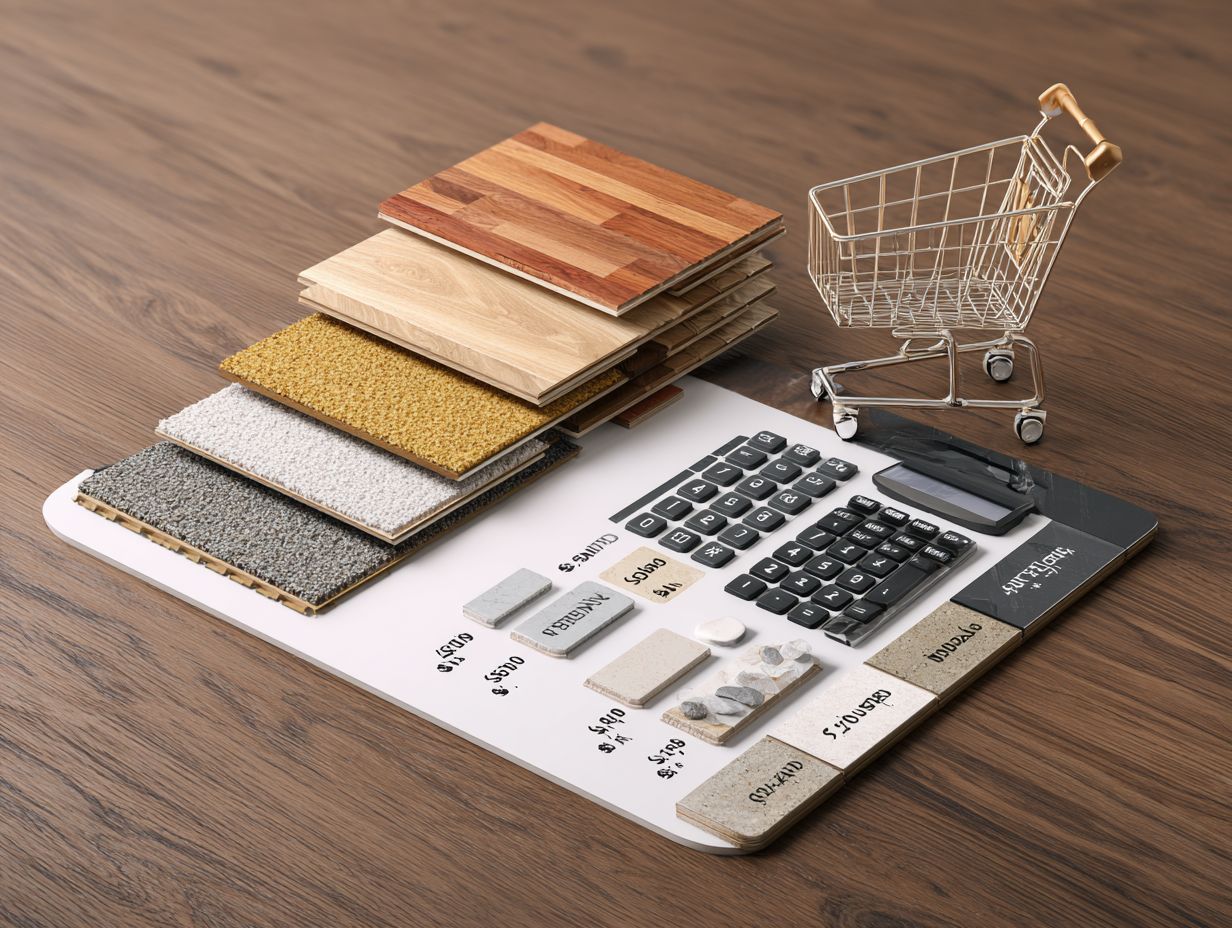
Retail flooring is defined as flooring sold directly to consumers by retailers, often accompanied by customer service and installation options.
Retail flooring caters primarily to individual homeowners and small-scale projects, providing personal service that wholesale options often lack.
Customers benefit from a hands-on approach, allowing them to choose from various materials, including hardwood, laminate, and vinyl.
For example, a retail store might offer consultations and samples, enabling homeowners to visualize how a particular floor looks in their home. This service can greatly improve the buying process by addressing specific design needs and installation concerns, ensuring customers have the information they need to make decisions that fit their personal spaces.
Advantages of Purchasing Retail
Buying retail flooring has clear benefits, like helpful customer support, professional installation services, and quick access to products for those who want to do it themselves.
When shopping at a retail store, you can benefit from expert guidance. Staff can help you select the right materials, such as hardwood, laminate, or tile, based on your space and budget.
Many retailers provide samples, allowing you to visualize how the flooring fits your home. If you enjoy doing projects yourself, stores often rent out tools and hold workshops to help you learn more.
The ease of returns is a significant benefit, ensuring you can exchange any unsuitable purchases without hassle.
Typical Price Range for Retail Flooring
Retail flooring prices often range from $2 to $15 per square foot, depending on the type of material and brand, with luxury vinyl generally being on the higher end.
For instance, Shaw’s laminate starts around $3 per square foot, offering a budget-friendly option that mimics wood. In contrast, Mohawk’s luxury vinyl plank can reach up to $7 per square foot, providing durability and a more upscale appearance.
Ceramic tiles from brands like Daltile typically range from $4 to $10 per square foot and are ideal for moisture-prone areas. When planning your budget, consider the installation costs, which can also vary significantly based on flooring type and complexity.
Factors Influencing Retail Prices
Retail flooring prices are influenced by factors such as brand recognition, retail markups, and seasonal sales, which can impact consumer buying decisions.
Supply chain costs have a significant effect, particularly for materials sourced from overseas. For instance, fluctuations in shipping prices can lead to increased costs for hardwood and laminate flooring.
Seasonal trends, such as demand surges in spring and summer, further exacerbate price changes. To capitalize on these factors, consumers should monitor promotional offers during major holidays when retailers often provide discounts ranging from 10% to 30%.
Utilizing price comparison tools like Honey or CamelCamelCamel can also help track price history and find the best deals.
Comparative Analysis: Wholesale vs Retail
Studying wholesale and retail flooring shows big differences in cost, quality, and help for customers.
2024 Flooring Market Price Comparison
2024 Flooring Market Price Comparison
Flooring Types and Average Prices: Average Price per Square Metre
Flooring Industry Statistics: Industry Sales and Volume
The 2024 Flooring Market Price Comparison gives a full overview of the flooring industry, highlighting average prices for different flooring types and important industry data. This analysis helps consumers and businesses make informed decisions based on cost and market trends.
Flooring Types and Average Prices reveal significant price variations across different flooring options.
- Solid Wood Flooring is priced at $50 per square metre With its high quality and long-lasting design, it attracts people who want something luxurious and durable.
- Engineered Wood Flooring and Ceramic Tile Flooring both cost $35 per square metre, offering a balance between aesthetics and practicality, as engineered wood provides stability and moisture resistance, while ceramic tiles are known for their versatility and ease of maintenance.
- Laminate Flooring, Linoleum Flooring, and Carpet are priced at $15 per square metre, catering to budget-conscious consumers who prioritize affordability without sacrificing design flexibility.
- Stone Flooring at $45 per square metre and Porcelain Tile Flooring at $70 per square metre Porcelain tiles are more expensive because they are very durable and look good.
- Luxury Vinyl Flooring LVT offers a middle ground at $20 per square metre, combining style with durability at a reasonable price point.
Flooring Industry Statistics further illuminate the market dynamics. Despite a decrease in total industry sales from $25,116 million in 2023 to $23,955 million in 2024, the industry maintains a significant market presence. This decline could be attributed to economic factors or shifts in consumer preferences. Meanwhile, the total volume also decreased from 17,835 units in 2023 to 17,206 units in 2024, possibly reflecting changing consumer demands or market saturation.
The average selling price in 2024 stands at $1.39, indicating competitive pricing strategies aimed at maintaining sales volume amidst market fluctuations. This average price suggests that while higher-end flooring maintains its market, there is strong competition in more affordable segments.
To sum up, the 2024 flooring market offers a wide selection of choices to suit different customer requirements and budgets. The pricing and sales information highlight the industry’s ability to change and compete, helping consumers and businesses make choices, whether they want high-end stone and porcelain, or more affordable laminate and carpet options.
Price Differences Explained
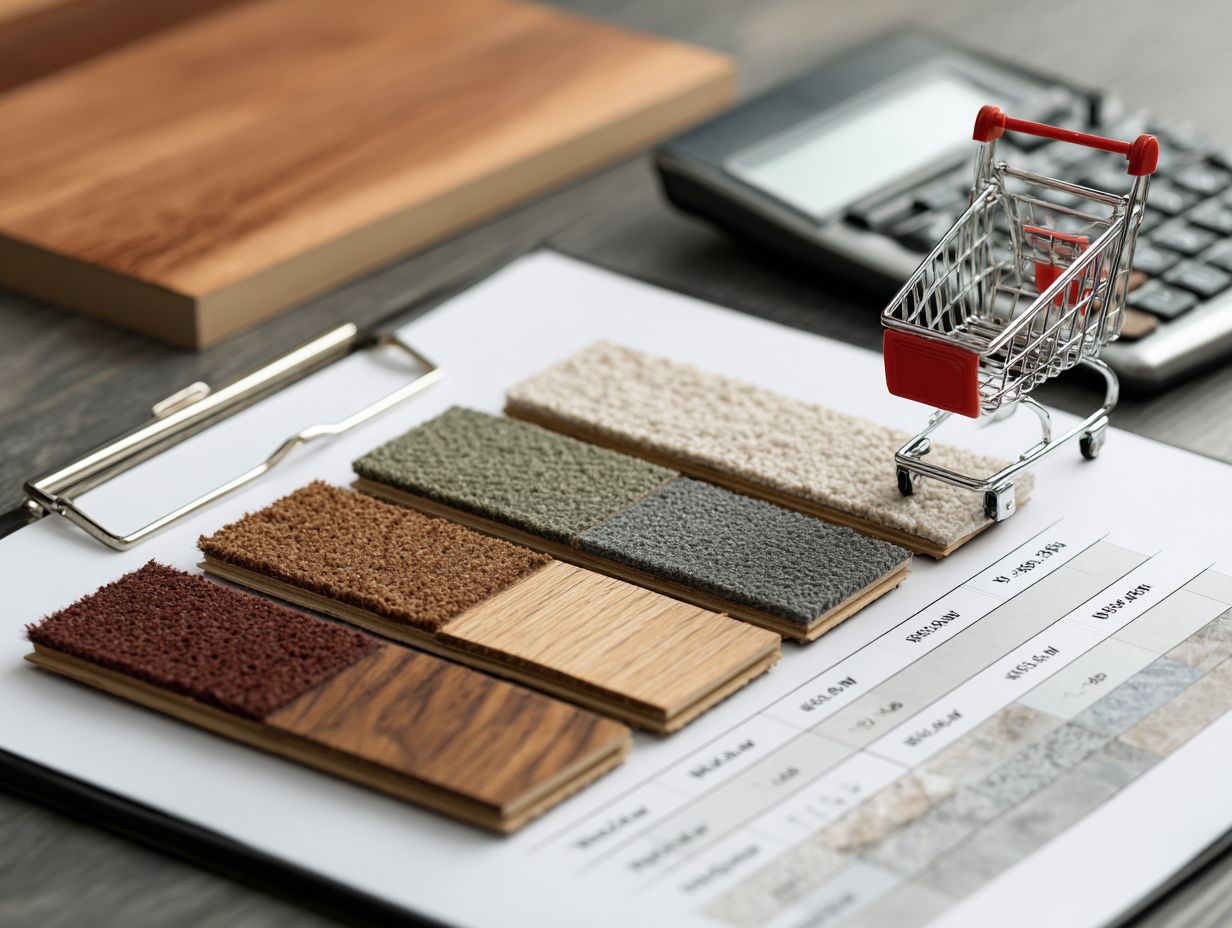
The primary price difference can be attributed to the wholesale model offering discounts for bulk orders, while retail pricing factors in overhead costs, often leading to a 20-50% price increase.
For instance, a popular laminate flooring option might retail for $2.50 per square foot, while wholesalers might offer it for $1.50 to $2.00 depending on the quantity purchased.
Hardwood flooring can see similar disparities; retail prices can reach $6 per square foot, whereas buying directly from wholesalers can lower that cost to around $4.
This significant difference highlights the potential savings for contractors and larger projects, particularly when purchasing thousands of square feet.
Make sure to compare supplier quotes to get the most out of your budget.
Quality Considerations
The quality between wholesale and retail can be quite different. Wholesale can offer good quality at lower prices, while retail usually provides better customer service and reliability.
To evaluate the quality of flooring, take into account different aspects, no matter how you buy it.
- First, examine the material-engineered hardwood offers durability, while solid hardwood provides timeless appeal. Look for certifications like FloorScore for low emissions, and inspect the finish; a thicker finish usually indicates better protection.
- Familiarize yourself with terms such as ‘wear layer’ in laminate flooring, which impacts longevity.
- Request samples to evaluate texture and color in your space, ensuring a well-informed and satisfying purchase experience.
Service and Support Differences
Service and support differ significantly between wholesale and retail; retail stores usually offer better customer service, whereas wholesale suppliers concentrate on large quantities and pricing.
Shops usually provide personal help, like help after purchase, showing how products work, and simple return rules. For example, many electronics stores will help troubleshoot issues with purchased devices, often providing on-site repairs or exchanges.
In contrast, wholesalers generally provide minimal support, emphasizing bulk transactions and competitive pricing over customer engagement.
To make the most of your purchase, consider examining warranty options-retailers often offer extended warranties for consumer assurance, while wholesalers might include only basic coverage.
Knowing these differences can help buyers choose the best buying strategy.
Buying Strategies for Flooring
Choosing the right time and place to buy flooring can help you save money and find better options. For an extensive analysis of this trend, our comprehensive study on pet-safe floor cleaning products offers valuable insights into maintaining your new floors effectively.
When to Buy Wholesale
Buying wholesale is most advantageous for contractors and property managers who require large quantities at competitive prices, especially during sales events.
For instance, consider bulk purchasing opportunities during seasonal sales, such as lumber during spring or paint before summer projects.
Buying large quantities often leads to savings of 20-30% from many suppliers.
Websites such as Alibaba or local suppliers often provide special offers for contractors, ensuring they have enough materials for multiple projects.
Creating a strong relationship with suppliers can lead to more discounts or early access to items in limited supply, which helps with budgeting and makes project schedules work better.
When to Buy Retail
Purchasing from a store is often the best choice for people who want ease, quick access, and complete customer help for small projects.
For urgent flooring needs, visiting a local retail store allows you to compare samples and take your selections home right away, usually within the same day.
DIY enthusiasts can benefit from the readily available tools and advice from knowledgeable staff, enhancing the project experience.
Building connections with retailers can lead to savings on later purchases or chances to buy unique items. For example, if you build a good relationship with a tile store, you might receive custom design tips or learn about upcoming discounts, enhancing your shopping experience and helping you save money.
Final Thoughts on Flooring Purchases
The decision to choose between wholesale and retail flooring is influenced by personal requirements, the size of the project, and the budget, so thinking it through is important.
When evaluating your flooring options, consider factors like durability, style, and installation costs.
For instance, if you’re renovating a high-traffic area, luxury vinyl planks offer excellent resilience and water resistance, typically priced between $2-$5 per square foot at retail.
In contrast, purchasing directly from wholesalers could reduce costs significantly-by up to 30%-but might require larger minimum orders. Researching local flooring distributors can yield substantial savings without compromising quality.
Considering both options will help you make a good investment.
Resources for Further Research
For more information about flooring choices, look at resources like the National Flooring Association and flooring-related blogs that follow market trends and review products.
Plus these, visit websites like Flooring.org, which provides a wealth of articles on types and installation techniques, or Houzz, where homeowners share their flooring experiences.
For product comparisons, examine Consumer Reports for unbiased reviews on durability and pricing. Websites of local hardware stores often include community forums where people talk about products and services, offering information specific to your area.
Using these resources will give you useful details to help you decide on flooring.
FAQs
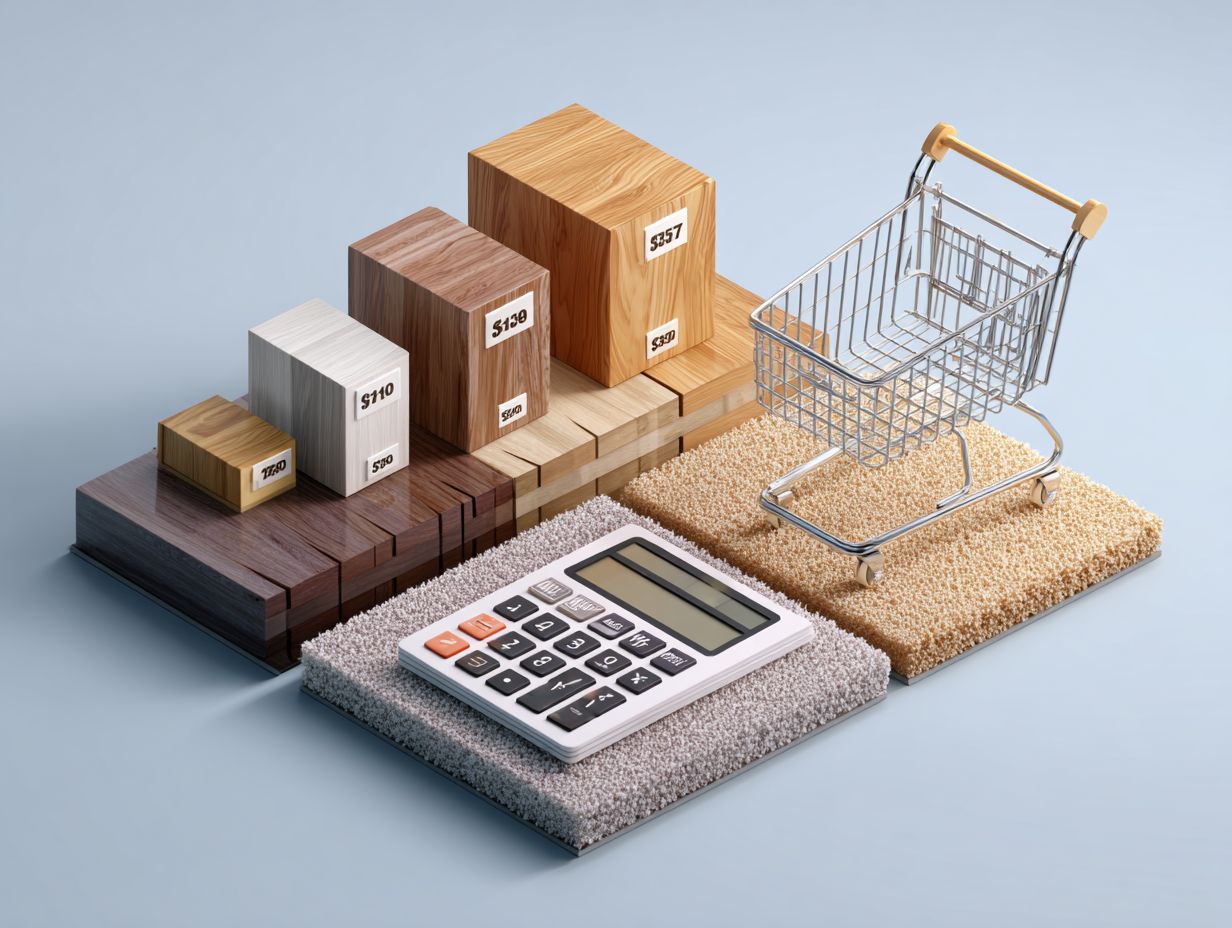
This FAQ section answers typical questions about flooring costs and buying tips, giving clear information for both consumers and contractors.
Common Questions About Flooring Prices
Common questions about flooring prices include inquiries about the best times to buy, how to assess quality, and comparisons between different materials.
Timing can significantly influence flooring prices, with discounts often available during off-seasons like late summer or post-holidays.
To assess quality, examine the thickness of the material and consider durability ratings; for example, a high-traffic area benefits from commercial-grade carpet.
When comparing materials, weigh both laminate and hardwood:
- Laminate typically costs $1-$5 per square foot.
- Hardwood can range from $5-$10, depending on the species.
Each choice has its pros and cons based on your budget and lifestyle.
Frequently Asked Questions
What is the difference between wholesale and retail flooring prices?
Wholesale flooring prices are typically lower than retail prices because they are offered to businesses and contractors who buy in bulk. Retail prices are usually higher because they are for individual customers who only need a small amount of flooring.
Can I get better deals on flooring by buying wholesale?
Yes, buying flooring wholesale can often save you money in the long run. However, you should research and compare prices from different suppliers to get the best deal.
Are there any disadvantages to buying flooring wholesale?
One potential disadvantage is that wholesale suppliers may have a minimum order requirement, which means you may have to buy more flooring than you actually need. Some wholesale suppliers might only sell to companies, not to individual buyers.
What should I consider when choosing between wholesale and retail flooring prices?
It’s important to consider your budget and the amount of flooring you need. If you are a business or contractor and need a large quantity of flooring, wholesale prices may be a better option. If you only need a small amount, retail prices may be more affordable.
Can I negotiate prices when buying flooring wholesale?
Yes, it is possible to negotiate prices when buying flooring wholesale, especially if you are buying in bulk. It’s always worth asking for a discount or negotiating for a better price to see if you can get a better deal.
Are there any other factors to consider when buying flooring wholesale?
In addition to price, it’s important to consider the quality of the flooring and the reputation of the wholesale supplier. You want to make sure you are getting a good deal on high-quality flooring from a reliable supplier.
